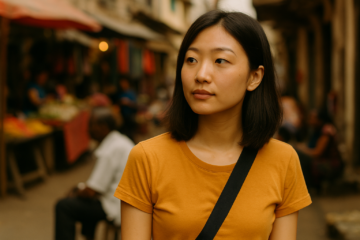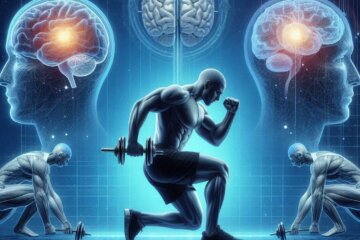The Complexity of Memories: To Capture or Not Vacation Photos
Our minds are intricate webs of memories that define us, mould us, and continue to guide us. These memories help us make sense of the world and our place within it, serving as a testament to our unique experiences and journeys. Among the many experiences that we gather and cherish, vacations hold a special place. They are our escapades from routine, windows to different cultures, explorations of the unknown, and celebrations of leisure and togetherness. But in an era dominated by technology, a pertinent question arises: do we need to capture these vacation moments in photographs, or can our cognitive faculties reliably store these memories?
To answer this question, we first need to delve into the fascinating world of human memory.
The Science of Memories
Memory isn’t a singular entity; it’s composed of several systems, each playing its unique role. Encoding, storing, and retrieving information involve complex processes that are subject to various cognitive factors.

The Atkinson-Shiffrin model of memory divides memory into sensory memory, short-term memory, and long-term memory (Atkinson & Shiffrin, 1968). Our vacations mostly fall into the domain of long-term episodic memories – recollections of personal experiences that occurred at a particular place and time.
However, our episodic memories aren’t foolproof. The process of consolidation transforms our short-term memories into long-term ones, but this transformation is influenced by factors like attention, emotion, and repetition. Furthermore, our long-term memories can be distorted or forgotten over time – a concept known as memory decay.
The Role of Imagery
Imagery plays a crucial role in memory formation and retrieval. Dual-coding theory, proposed by Allan Paivio, suggests that both verbal and visual information is used to represent information (Paivio, 1986). Visual information or imagery can lead to a better recall of an experience.
Studies show that concrete concepts that can be visualized are remembered better than abstract concepts. This suggests that the vivid and diverse visuals of vacations can create stronger memories compared to everyday experiences. However, the transient nature of these experiences, coupled with the limitations of human memory, can mean that details fade over time.
✈️ “Your Dream Vacation Awaits! 🏖️ Dive into exclusive travel deals now! 👉 Click here
Capturing Memories: Photographs on Vacation
Photographs serve as tangible evidence of our experiences, capturing moments that we can revisit anytime. In terms of cognitive theory, they serve as external memory aids that help compensate for our memory’s inherent limitations.
Taking photographs during vacations helps us solidify these experiences in our minds. The act of photography itself can be a form of elaborative encoding, where we process the information more deeply by paying close attention to the subject of our photos.
Photographs also facilitate reminiscence. They can trigger retrieval of not just the moment captured, but also the associated emotions, thoughts, and sensory details, making our vacation memories more vivid and accessible.
However, there’s a caveat. While photographs preserve our memories, excessive photography can hamper our experience. If we’re too focused on capturing every moment, we may miss out on fully immersing ourselves in the experience.

The Happiness Boost from Memories
Memories aren’t merely a record of our past; they actively contribute to our present happiness. The Broaden-and-Build Theory of Positive Emotions proposed by Barbara Fredrickson posits that positive emotions broaden our thought-action repertoires, enabling us to build valuable physical, intellectual, psychological, and social resources (Fredrickson, 2001). When we recall positive memories, such as those from vacations, we effectively re-experience the positive emotions associated with them. This can enhance our overall well-being, boost our resilience, and foster creativity.
Another theory that explains the link between memories and happiness is the Savouring Theory, developed by Fred Bryant and Joseph Veroff. Savouring is the ability to focus on, appreciate, and enhance positive experiences and emotions. Reminiscing through photographs can help us savour our vacation experiences long after they’re over, providing a lasting source of happiness.
🌴 “Unlock Endless Travel Possibilities! 🌏 Exclusive deals just a click away! 👉 https://travel-psych.com/tripadvisor_300ktours
Conclusion
In conclusion, our memories and the process of creating them are complex and multifaceted. Photographs, while not necessary for creating memories, can serve as effective aids in consolidating and recalling our experiences. They help us relive and savour our happiest moments, playing a vital role in enhancing our well-being. However, it’s equally important to balance the act of capturing moments with the act of fully experiencing them. After all, the essence of a vacation lies not just in the pictures we bring back, but also in the indelible experiences etched in our minds.
References:
- Atkinson, R. C., & Shiffrin, R. M. (1968). Human memory: A proposed system and its control processes. In K. W. Spence & J. T. Spence (Eds.), The psychology of learning and motivation (Vol. 2, pp. 89–195). New York: Academic Press.
- Paivio, A. (1986). Mental Representations: A Dual Coding Approach. Oxford, England: Oxford University Press.
- Fredrickson, B. L. (2001). The role of positive emotions in positive psychology: The broaden-and-build theory of positive emotions. American Psychologist, 56(3), 218–226.
- Bryant, F. B., & Veroff, J. (2007). Savoring: A new model of positive experience. Lawrence Erlbaum Associates Publishers.




0 Comments